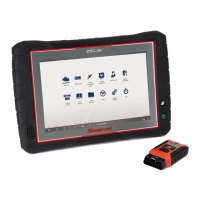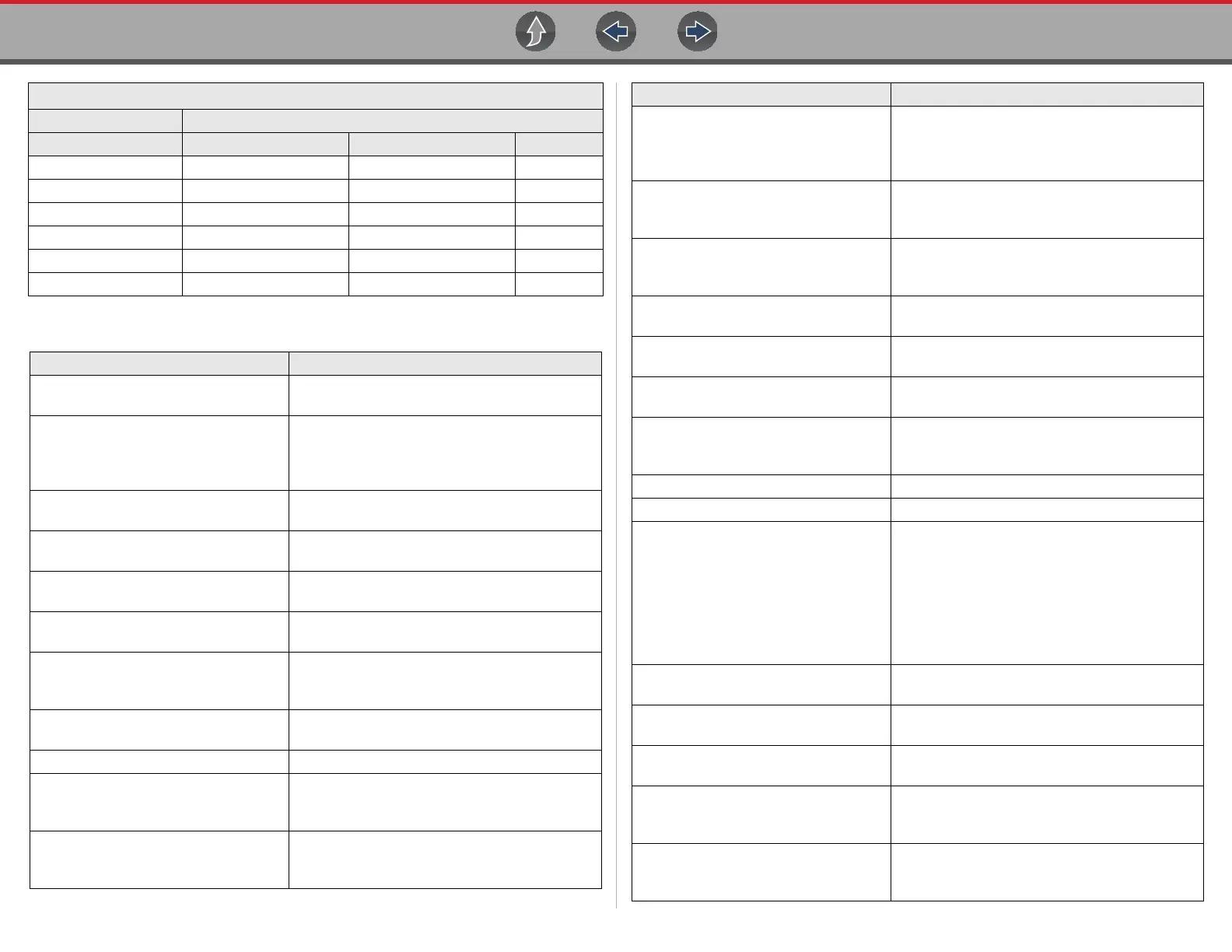Scope and Multimeter Operations General Reference (Testing Strategies)
149
9.17.5 Glossary of Common Terms
50 45.0 30.0 22.5
60 54.0 36.0 27.0
70 63.0 42.0 31.5
80 72.0 48.0 36.0
90 81.0 54.0 40.5
100 90.0 60.0 45.0
Term / Abbreviation Description
AC
Alternating Current - electrical current that
switches polarity at regular intervals.
Aliasing
An effect that causes an incorrect signal to be
displayed and/or causes a trigger to malfunction,
due to the input signal exceeding the sample rate
of the scope.
Amperage
The strength of an electric current, expressed in
amperes
Amplitude
Vertical magnitude (level or position) of a signal,
or the varying quantity from its zero value.
Buffer
An electronic reservoir for temporary storage of
data.
Cursor
Onscreen markers used to measure time,
amplitude and frequency.
Coupling AC
Function used to subtract the average value of a
signal so that small variations can be displayed in
the waveform.
DC
Direct Current - electrical current that flows in
one direction only.
Delta Difference in time between two events.
Dropout
An intermittent or unwanted, vertical fall in a
signal to zero that may cause an undesired
result.
Duty cycle
Measurement of the length of a signals on time.
Specified as a percentage (ratio), of the total
cycle time.
Duty % to Dwell Conversions
Duty Cycle Dwell
% 4 cyl 6 cyl 8 cyl
Dwell
Used to measure a signals on time in degrees of
dwell. Commonly used to measure mixture
control solenoids on carbureted feedback
engines and specified in duty cycle %.
Dwell 60
Measurement of the length of a signals on time
displayed on a 0 to 60 degree scale. 0° = 0%; 30°
= 50%; 60° = 100%.
Dwell 90
Measurement of the length of a signals on time
displayed on a 0 to 90 degree scale. 0° = 0%; 45°
= 50%; 90° = 100%.
Filter
Function used to filter or smooth out spikes and
fast variations in signals.
Frequency
The number of times a signal repeats in one
second. Measured in Hertz (cycles per second).
Glitch
An intermittent or unwanted, error in a signal that
may cause a false or undesired result.
Grid
The graph displayed on the scope screen that is
made up of the x and y axis scales that aid in the
measuring of signal characteristics.
Horizontal Scale See Sweep Scale
Invert Function used to switch signal polarity.
Lambda (l)
Used to represent a numerical value denoting the
actual measured air/fuel ratio with respect to the
ideal air/fuel ratio at stoichiometry. Lambda
equals one (1) when the actual air/fuel ratio is
equal to the theoretical (stoichiometric) air/fuel
ratio of 14.7 (14.66) to 1. Lambda less than 1
means excess fuel; greater than 1 means excess
air.
Megasamples per second (MS/s)
Sample rate unit equal to one million samples per
second.
Noise or Hash
Unwanted voltage, current or signal interference
that is imposed on a signal.
Parasitic Voltage
Trace voltage in a circuit after the main power
source is disconnected.
Peak
The maximum amplitude value present in a
varying or alternating voltage. This value may be
either positive or negative.
Peak Detect
Peak detect captures and evaluates all signal
sample points, in order to display fast occurring
events or glitches.
Term / Abbreviation Description

